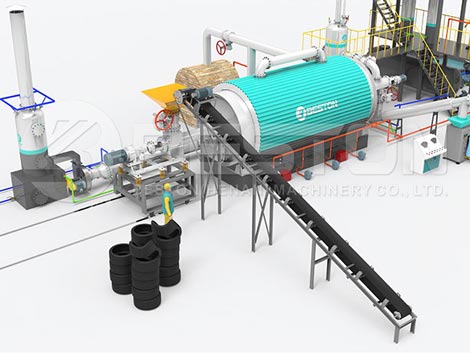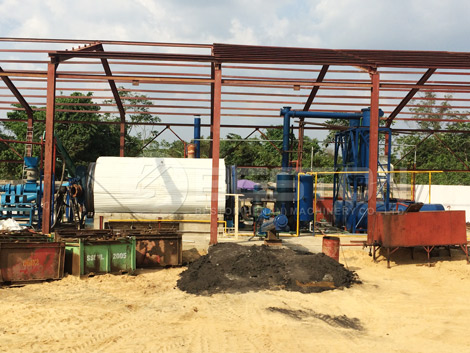Tyre recycling is the process of extracting usable materials from scrap tyres. This includes recycling the rubber, as well as recycled steel and textiles. The global tyre recycling industry was worth $3.5 billion in 2016 and is estimated to grow to $8.6 billion by 2024. There are many tyre-recycling plants around the world, but there are also a lot of misconceptions about them. In this blog post, we will dispel some of those myths and tell you the truth about waste tyre recycling plant.

What Are the Benefits of Tyre Recycling
Most people are aware of the benefits of recycling paper, plastic and glass, but fewer realise that tyres can be recycled too. In fact, tyre recycling offers a number of important benefits. Firstly, it helps to reduce the amount of waste that is sent to landfill sites. It also reduces the demand for new tyres, which helps to conserve valuable resources. It even lowers pollution by reducing the need for tyre manufacturing. Finally, tyre recycling provides an important source of rubber that can be used in a variety of applications. As a result, tyre recycling offers a number of important environmental benefits.
The Different Types Of Tyre-recycling Plants
There are three main types of tire pyrolysis plant: pyrolysis, devulcanisation and mechanical recycling.
Pyrolysis plants use high temperatures to break down tyres into their component parts, such as oil, gas, carbon and steel. This process is energy-intensive, but it can be used to produce a range of valuable products.
Devulcanisation plants use chemicals and heat to break down tyres into their component parts. This process is less energy-intensive than pyrolysis, but it produces a lower quality product.
Mechanical recycling plants grind tyres into small pieces and then separate the different materials using a series of screens and magnets. This process produces a lower quality product than either pyrolysis or devulcanisation, but it is less energy-intensive.
Tyre Recycling Myths Debunked
Recycling tyres has come a long way in recent years. Once upon a time, they were simply thrown away or burned, releasing harmful toxins into the environment. Today, however, recycling tyres is not only possible but also highly beneficial. Recycling tyres helps to reduce landfill waste, conserve resources, and create new products. In fact, tyre recycling is so effective that it has been dubbed “the perfect circle” by some environmentalists. Check the high-quality pyrolysis plant here.
One of the most common myths about tyre recycling is that it is not good for the environment. This could not be further from the truth! As mentioned above, recycling tyres helps to reduce landfill waste and conserve resources. In addition, recycling tyres can also help to create new products. For example, crumb rubber – which is made from recycled tyres – can be used in a variety of applications, including playgrounds and running tracks. As you can see, tyre recycling is not only good for the environment but also has many practical applications.

Another common myth about tyre recycling is that it is not profitable. Again, this is simply not true. Tyre recycling is a highly profitable industry, with companies all over the world vying for a piece of the pie. In fact, the global tyre recycling market was valued at $934 million in 2019 and is expected to reach $1.3 billion by 2027. As you can see, there is big money to be made in tyre recycling – so don’t let anyone tell you otherwise.
If you’re still on the fence about tyre recycling, consider this: every year, 1.5 billion tyres are produced worldwide. That’s a lot of tyres! And with only 30% of those tyres being recycled, there’s a huge opportunity for change. So why not do your part to help make tyre recycling more commonplace? It’s good for the environment and it’s good for business – everybody wins! Get tyre pyrolysis plant cost here.